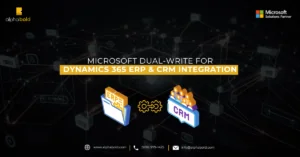Introduction
Securing your Dynamics 365 environment is crucial for safeguarding your business’s data and operations. This blog outlines the best practices to protect your Dynamics 365 Customer Engagement environment from both external and internal threats. Maintaining a secure Dynamics 365 environment represents a substantial investment, delivering significant ROI for your business. However, as a SaaS (Software as a Service) solution, it comes with its own set of unique security challenges. To ensure your environment remains secure against various threats, it is essential to implement robust security measures. Here are the best practices you should follow to safeguard your Dynamics 365 environment effectively.
Securing Your Dynamics 365 Environment: Best Practices
1. Staying Up to Date with Patches:
2. Role-Based Access Control:
Read more: Dynamics 365 Fraud Protection: An Overview.
3. Enable Audit logging:
4. Strong Authentication:
5. Secure Configuration:
Book a One-on-One Consultation
Discuss your specific security concerns with our experts. Book a one-on-one consultation and get actionable insights to secure your Dynamics 365 environment.
Request a Consultation6. Power Platform Security Features:
Power Platform offers a range of security features, including single sign-on, multi-factor authentication, and a single platform to engage with internal and external users more securely. With Power Platform’s upcoming implementation of Microsoft Entra ID Continuous Access Evaluation (CAE), user identification and authentication will be even more secure and reliable.
Further Reading: Unlocking the Power of AI in Dynamics 365 Customer Service
7. Azure Security Features:
8. Data Protection and Risk Mitigation:
Securing Your Dynamics 365 Environment: Is Your Data Safe?
Don't leave your valuable data at risk. Let us assess your current security measures and guide you to a stronger, more protected Dynamics 365 solution.
Request a Consultation9. Cyber Training:
10. Monitor Third-Party Tools:
Dynamics 365 modules often use third-party tools for enhanced functionality. These tools should be strictly monitored and must adhere to security best practices. A key measure imperative to securing your Dynamics 365 environment is that you obtain proof of compliance from ISVs (Independent Software Vendors) before integrating their tools into your environment. A study by Ponemon Institute found that 59% of companies experienced a data breach due to a third-party vendor.
11. Protect Customer Data:
12. Secure Integrations:
We Help Business Like You Take Proactive Security Measures
Secure your Dynamics 365 environment with our expert consultation. Request your consultation now!
Request a ConsultationConclusion
Explore Recent Blog Posts








